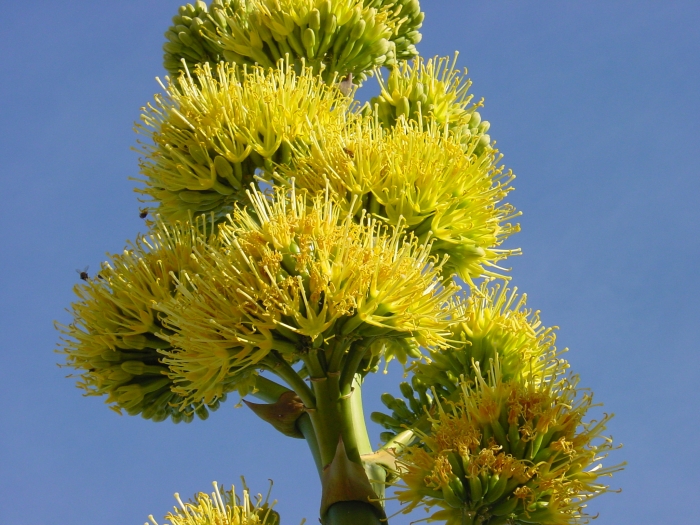Desert Agave
(Agave deserti)
Desert Agave (Agave deserti)
/
/

NoahElhardt assumed
Public domain
Image By:
NoahElhardt assumed
Recorded By:
Copyright:
Public domain
Copyright Notice:
Photo by: NoahElhardt assumed | License Type: Public domain | License URL: https://creativecommons.org/public-domain/ | Uploader: NoahElhardt | Publisher: Wikimedia Commons | Title: Agave_deserti_flower.jpg | Notes: |






















































Estimated Native Range
Summary
Agave deserti, commonly known as Desert Agave, is an evergreen succulent native to the Sonoran and Mojave deserts of the Southwestern USA and Baja California, Mexico. This plant thrives in arid environments, often found on rocky slopes and in sandy soils. It forms a compact rosette of fleshy, gray-green leaves that range from 20–70 cm in length and 4.5–10 cm in width, each leaf bearing sharp spines along the edges and a terminal spine at the tip. Desert Agave is slow-growing, typically flowering once at maturity after 20 to 40 years, producing a tall inflorescence 2–6 meters high. The panicle is adorned with numerous yellow, funnel-shaped flowers, each 3–6 cm long, which are highly attractive to pollinators such as bees and hummingbirds.
Desert Agave is valued for its sculptural form and is often used as a focal point in xeriscapes, rock gardens, and desert-themed landscapes. Its drought tolerance and low water requirements make it an ideal choice for water-wise gardening. While it does best in full sun, it can tolerate some light shade. It is essential to plant Desert Agave in well-draining soil to prevent root rot. After flowering, the plant dies, but it often leaves behind offsets or "pups" that can be replanted. Gardeners should handle this plant with care due to its sharp spines.CC BY-SA 4.0
Desert Agave is valued for its sculptural form and is often used as a focal point in xeriscapes, rock gardens, and desert-themed landscapes. Its drought tolerance and low water requirements make it an ideal choice for water-wise gardening. While it does best in full sun, it can tolerate some light shade. It is essential to plant Desert Agave in well-draining soil to prevent root rot. After flowering, the plant dies, but it often leaves behind offsets or "pups" that can be replanted. Gardeners should handle this plant with care due to its sharp spines.CC BY-SA 4.0
Plant Description
- Plant Type: Succulent
- Height: 2-3 feet
- Width: 4-6 feet
- Growth Rate: Slow
- Flower Color: Yellow
- Flowering Season: Spring, Summer
- Leaf Retention: Evergreen
Growth Requirements
- Sun: Full Sun
- Water: Very Low
- Drainage: Fast
Common Uses
Bee Garden, Bird Garden, Butterfly Garden, Drought Tolerant, Fire Resistant, Hummingbird Garden, Low Maintenance, Potted Plant, Rabbit Resistant, Rock Garden, Showy Flowers, Street Planting
Natural Habitat
Native to the Sonoran and Mojave deserts
Other Names
Common Names: Mescal , Century Plant , Maguey , Maguey De Desierto
Scientific Names: Agave deserti , Agave deserti subsp. deserti , Agave pringlei , Avave consociata
GBIF Accepted Name: Agave deserti Engelm.